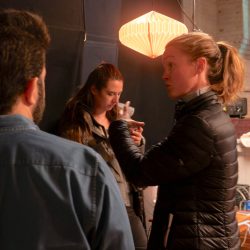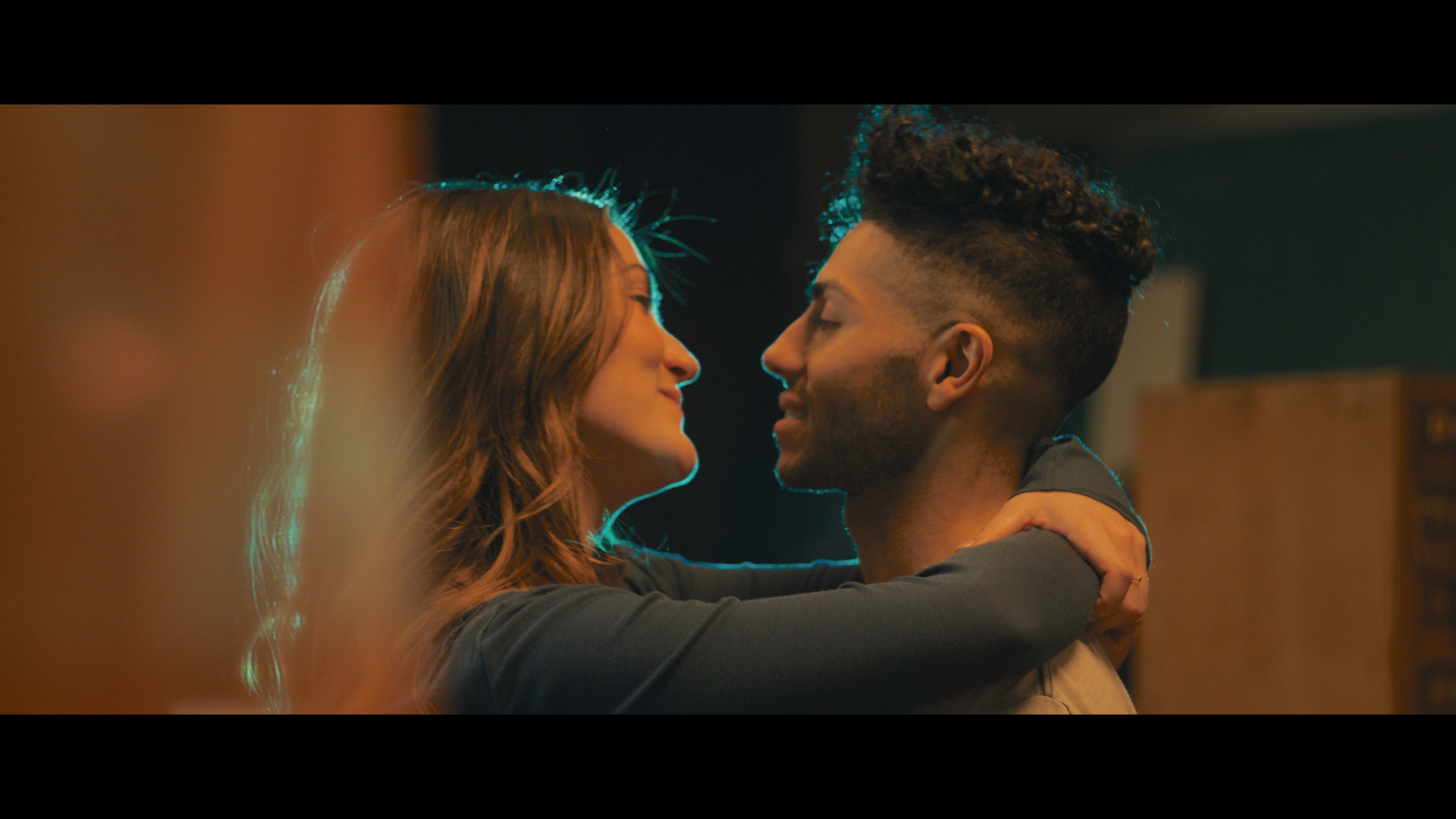This article contains spoilers.
Ill-fated love has been the subject of many a YA novel and always finds an enthusiastic audience. Wish You Were Here, the acclaimed novel by Renee Carlino, explores the deep romance between Charlotte and Adam in a somewhat unique way – they behave more like adults rather than adolescents fumbling their way through love and heartache.
Writer/ Director/ Actor Julia Stiles captures the maturity and tenderness of their short-lived romance. That’s why the novel struck a chord with her and she chose it for her directorial debut. Julia had been wanting to direct for a while.
The wheels for Wish You Were Here were set in motion when actress Gabby Kono-Abdy who plays Helen in the movie, sent Stiles Carlino’s book for directorial consideration. “I was immediately taken by it. I had a visceral response. I laughed, I cried. I laughed through my tears. It had a gut punch. It had emotion behind it that would carry me. And it felt like the right genre for me too,” she says.
The film had to sustain Julia’s interest over the length of time it would take to get produced, but also speak to the fans of her acting work.
Wish You Were Here is a romantic tragedy with many bittersweet and heartfelt moments. Julia Stiles leans into the classical elements of ill-fated love. “It’s very modern in the setting and the main characters are very young. It’s a tragedy because they’re star-crossed lovers that meet spontaneously one night. They’re not set up. They’re not on a dating app.”
“It’s very serendipitous that they meet. There’s a magic to that and their first night. But they can’t be together because there’s an obstacle that will tear them apart. And that obstacle happens to be that Adam’s terminally ill.”
Knowing that your whirlwind romance has a limited timespan significantly affects the character dynamics and the range and speed of emotions Charlotte (Isabelle Fuhrman) and Adam’s (Mena Massoud) experience during the story.
“They play a game together and Charlotte starts weeding this story the first night that they meet about an imagined love affair that they have. That carries through the whole movie. They sometimes talk as though they’re an older couple looking back on a lifetime together, which I pulled from the book,” continues Stiles.
“This makes the love story so much deeper and more mature than the age of the characters. It’s not just about falling in love in the immediate moment. It’s not love at first sight. It’s not just the initial butterflies of having a crush on somebody. Charlotte and Adam play out this deeper romance. That makes their time together more significant.”
Charlotte and Adam’s encounter begins with what appears to be a special connection. But the following morning, he ghosts her after a dispute and she’s unsure why. It’s a modern, confusing, and hurtful experience that’s all too common. But Adam’s avoidance isn’t because of the reasons she thinks.
Stiles avoids overusing the common SMS YA relationship tropes and instead opted to use the mural as a symbol of the beauty of their relationship. The mural came from Carlino’s novel.
“Adam finally explains in a letter that he sends to Charlotte through a friend, that the morning after they got together he was confused and their miscommunication led to this fight that made her leave. He tries to explain to her that it was because his brain wasn’t working properly and that he was afraid to tell her what was really going on.”
A Tale Of Two Tones – Bitter And Sweet
Julia Stiles fully immerses herself in the bittersweet moments of Wish You Were Here. Some are bitter and some are sweet.
“I like to pull people in with the romantic comedy elements, the lighter moments, the silliness of Charlotte’s workplace, the pressure from her friends and family to go on a dating app and find the perfect guy and get her life,” quips Stiles.
“When Charlotte meets Adam and the hope of a relationship after a fun night together, it becomes a sad love story when she finds him in the hospital.”

Julia Stiles on set. Picture courtesy of Lionsgate Films
“But that’s life. Laughing through your tears means we can have those two experiences and two emotions simultaneously or back to back. That’s what I was trying to capture in the movie.”
Charlotte and Adam understand they have limited time together, so they must make every day of their romance count. Wish You Were Here tracks the pace of their accelerated relationship, yet also slows things down enough so they can process and enjoy each other.
“I didn’t want to go through multiple seasons of their relationship because the idea that time is precious, and that we should be so lucky to create a lifetime of memories with another person in a limited time, the idea that what if forever is tomorrow, raises the stakes of their relationship,” notes Stiles.
The passage of time was expedited through various montages in the movie. She cautions against the misuse of montages. However, “if you catch intimate moments with people, I think that montages can be really powerful.”
Charlotte’s concerned friends and family constantly ask her why she’s falling for a man who’s imminently dying and their relationship can never fully blossom.
“One of the things that makes Charlotte a remarkable character is that the story is a meditation on what love actually is. Taking care of Adam is a true act of love,” states Julia.
Once Charlotte and Adam resign themselves to their circumstances, they decide to go on a trip around the world. “They go on a private jet. They go to Paris. They go on a sail boat.”
After Adam passes, he bequeaths Charlotte lots of money. Stiles took great care to keep Adam’s wealth from Charlotte until the end to avoid introducing the possibility that she was acting for selfish reasons.
Getting It Made
Julia Stiles first acquired the rights to Renee Carlino’s novel in 2020. “Gabby Kono Abdi contacted my agents, but she also contacted me through Instagram and said, ‘I read that you’re interested in directing. What about this book?'”
Stiles immediately visualized the book as a movie; the movie to commence her directing career. By January 2021, she sent a script to producer Molly Connors from Phiphen Studios with whom she had preciously established a relationship while acting in one of her movies. “I remember watching Molly on set with her producing partner Amanda Bowers and thinking, ‘I’m going to work with these women again because they really get stuff done,'” asserts Stiles.
Fortunately, Connors and Bowers loved Stiles’ script and they set out to raise finance. Enderby Entertainment, Grindstone Entertainment Group and Lionsgate Films came onboard soon after to complete the financing. Universal International secured international distribution rights and the they were ready to cast the film. The entire process took about five years.
